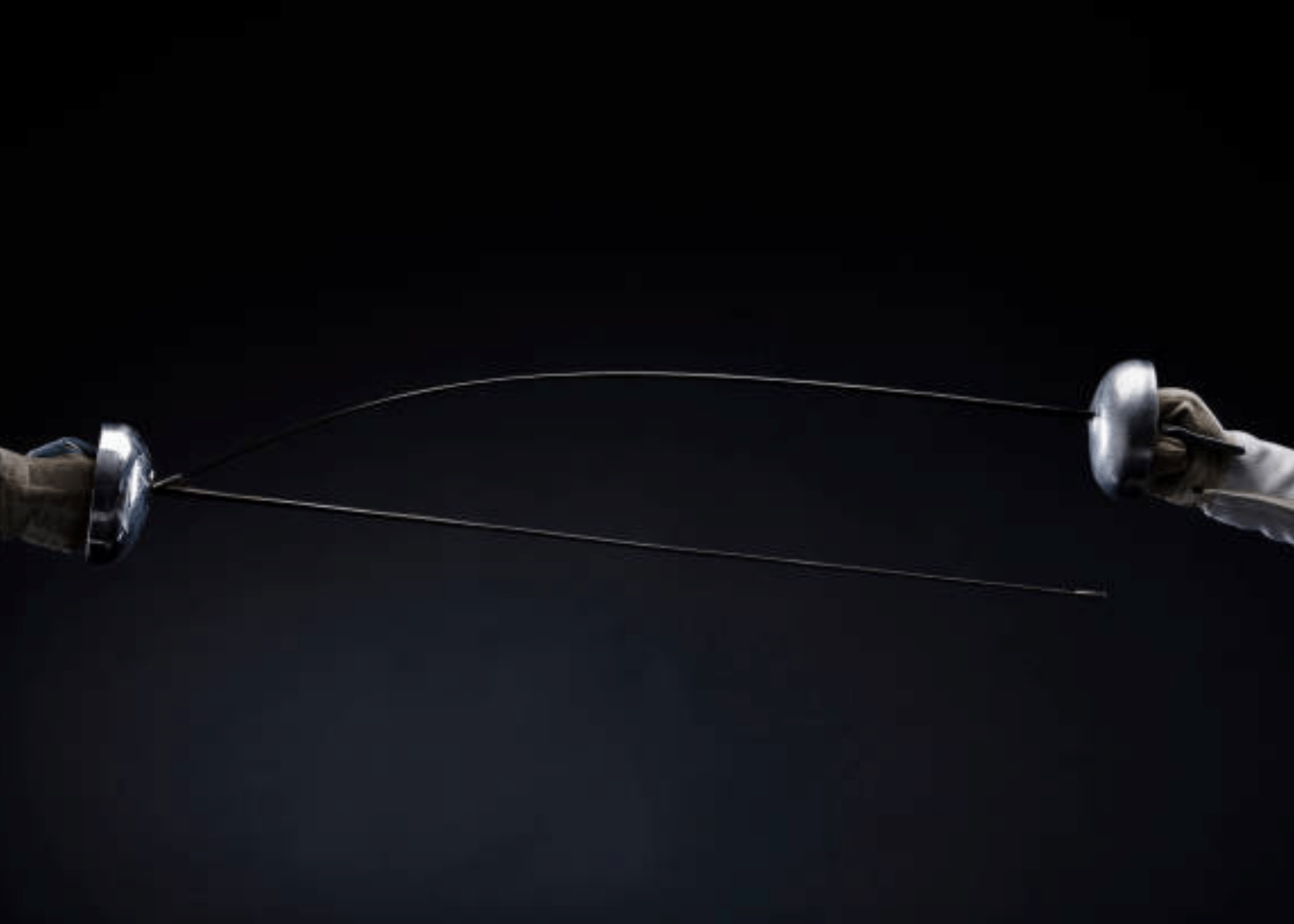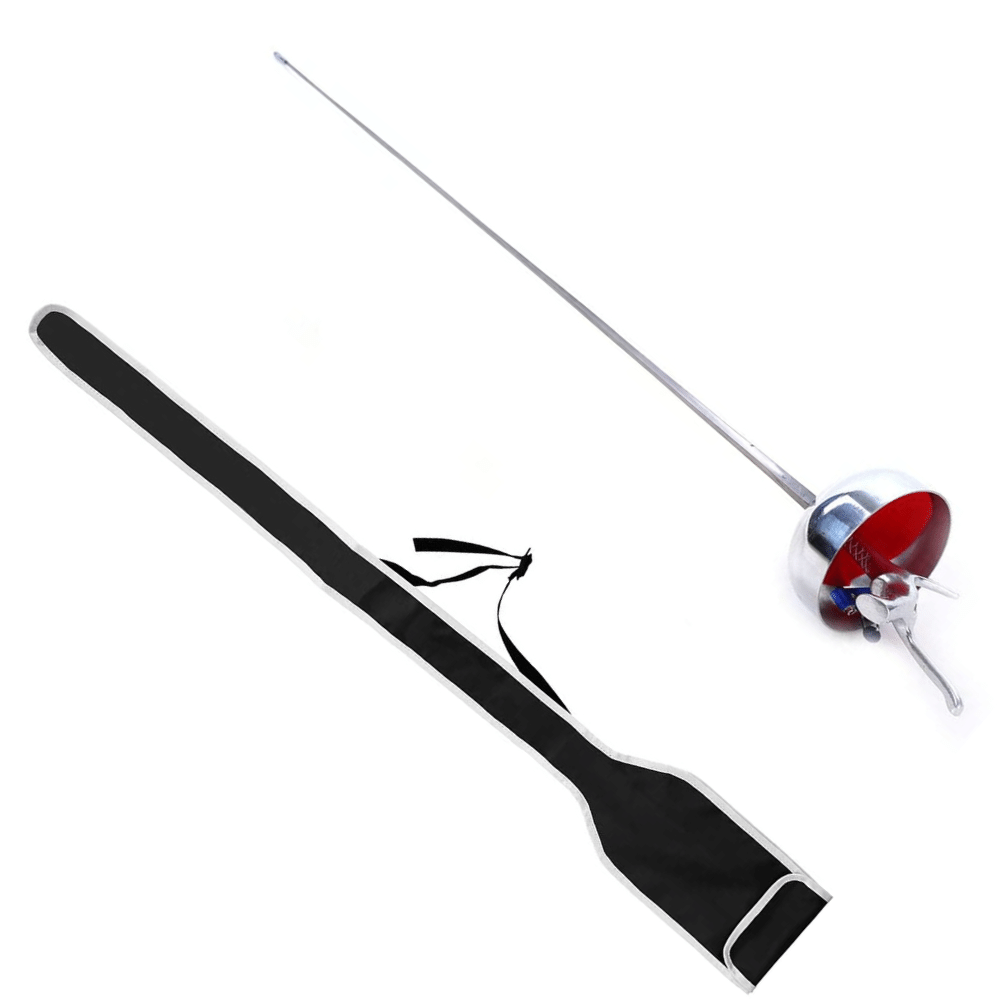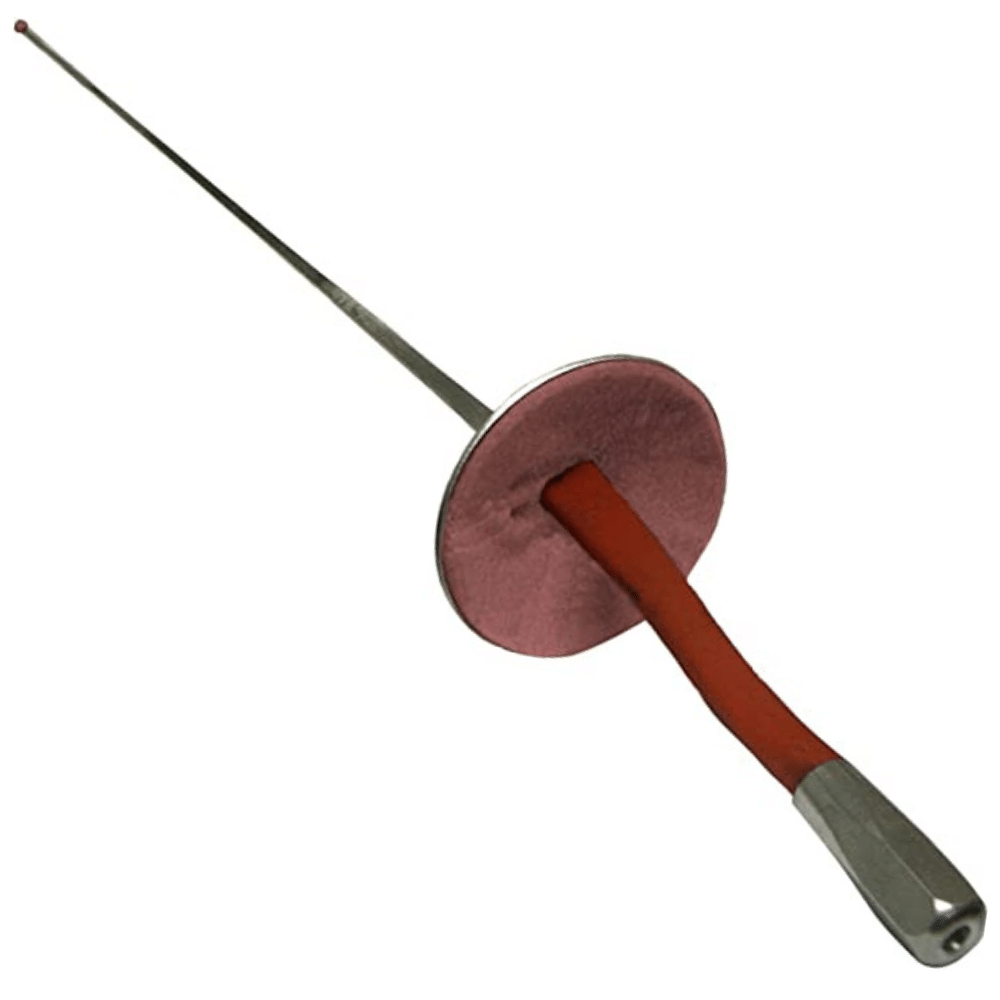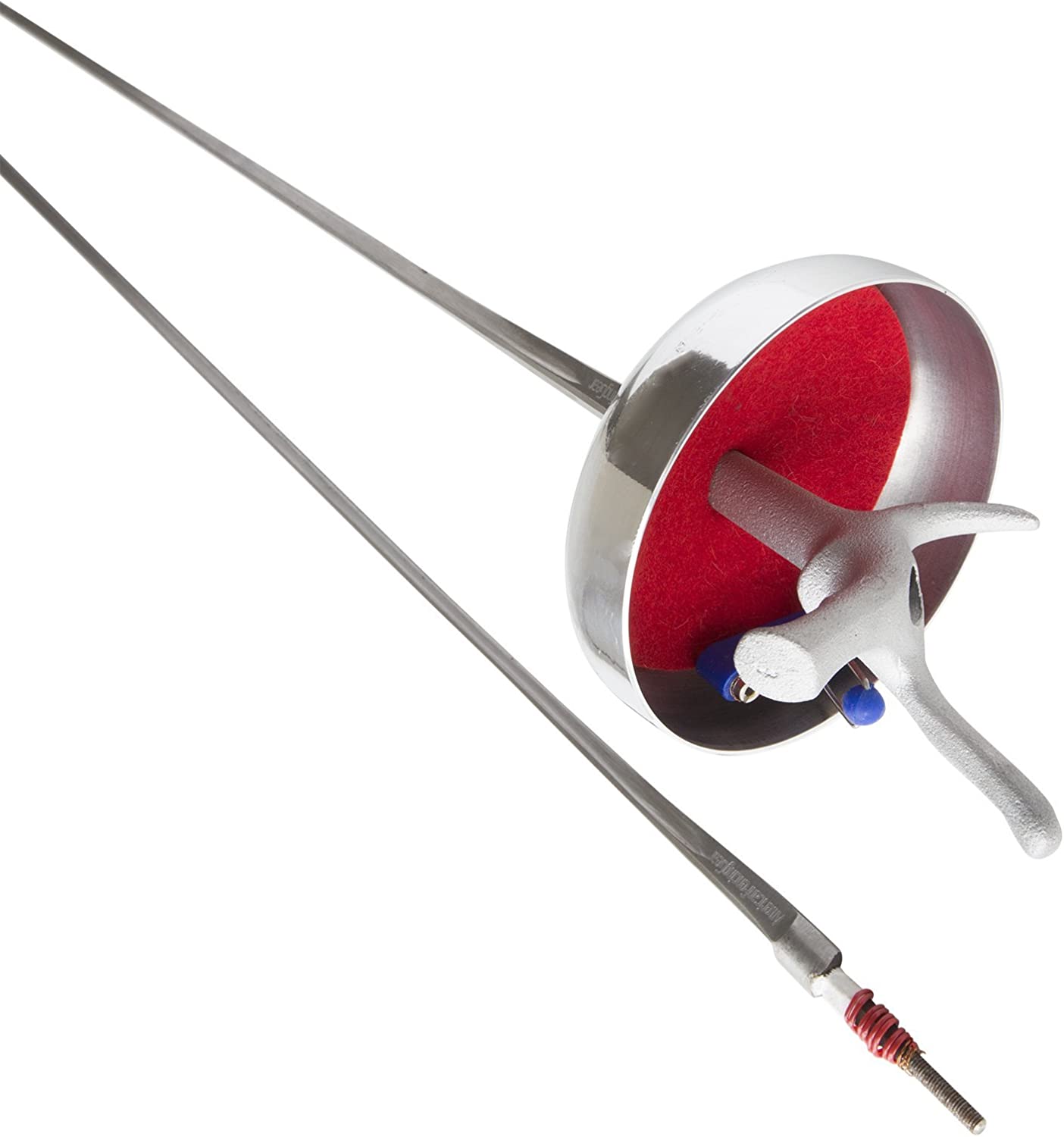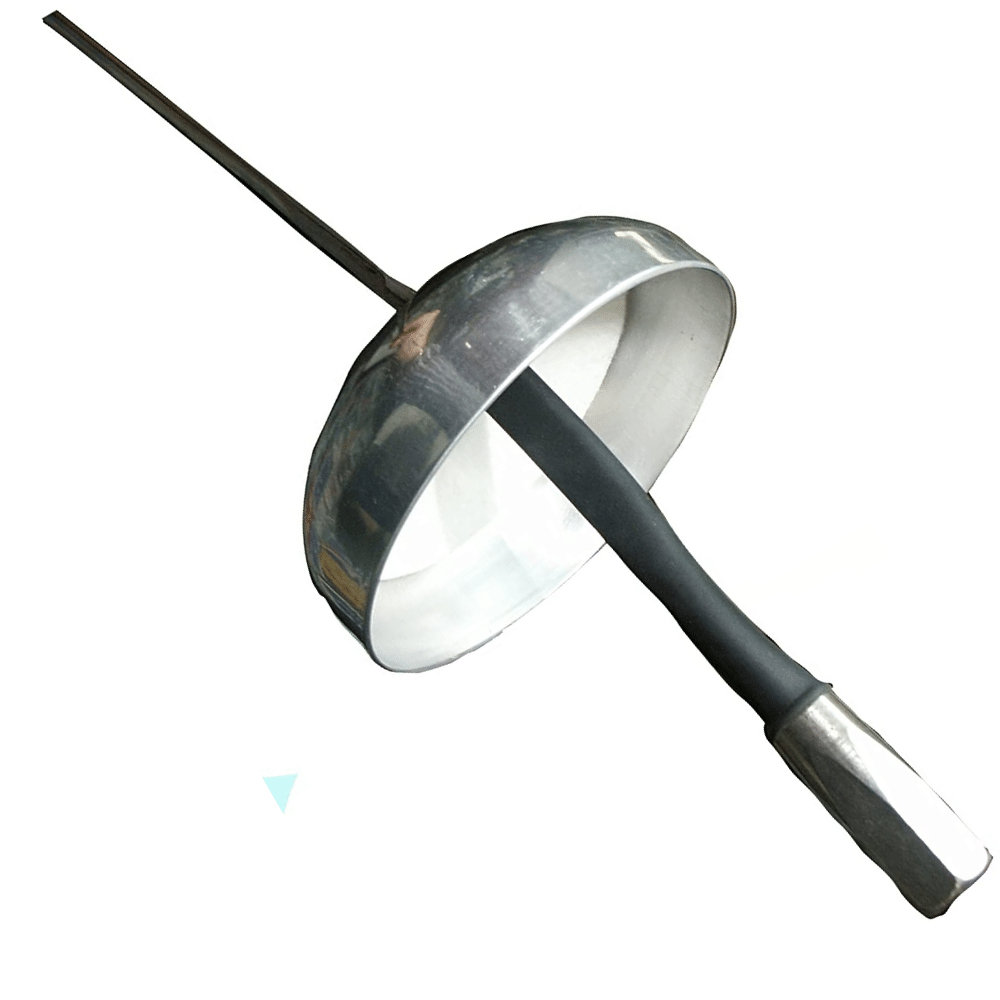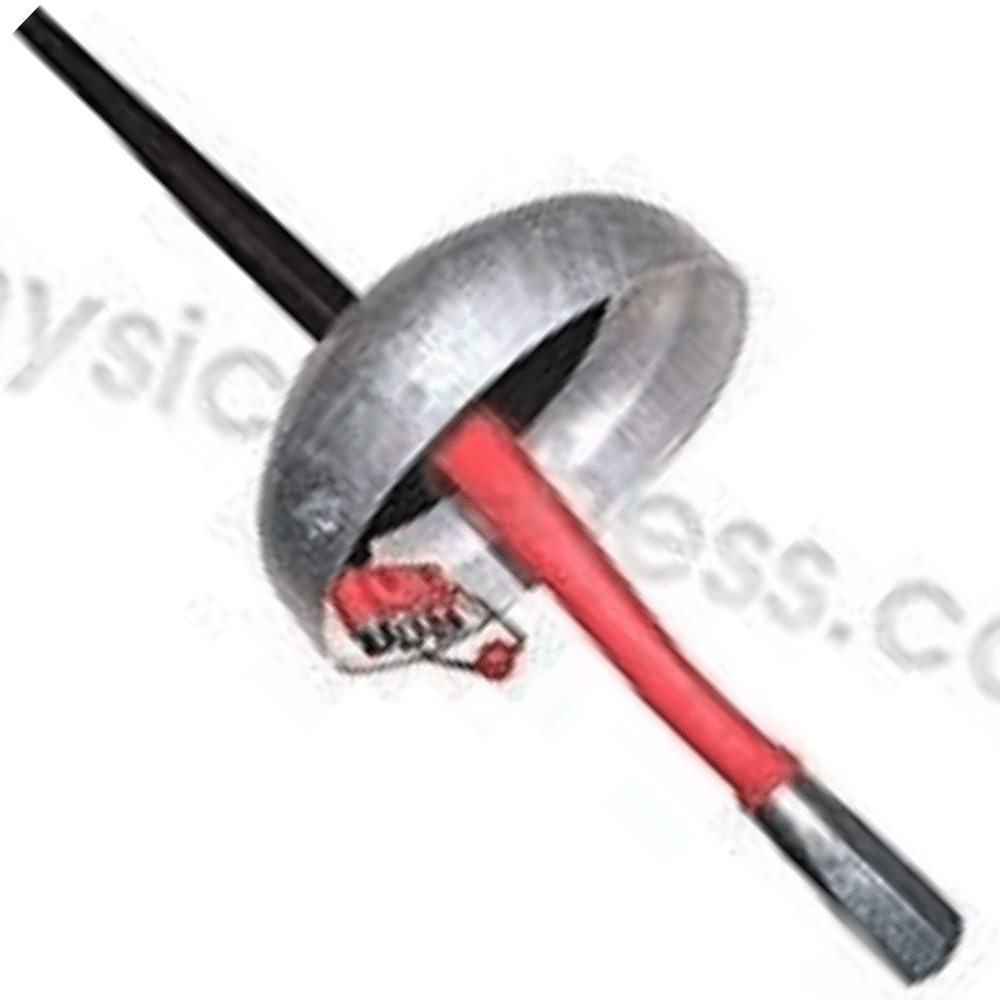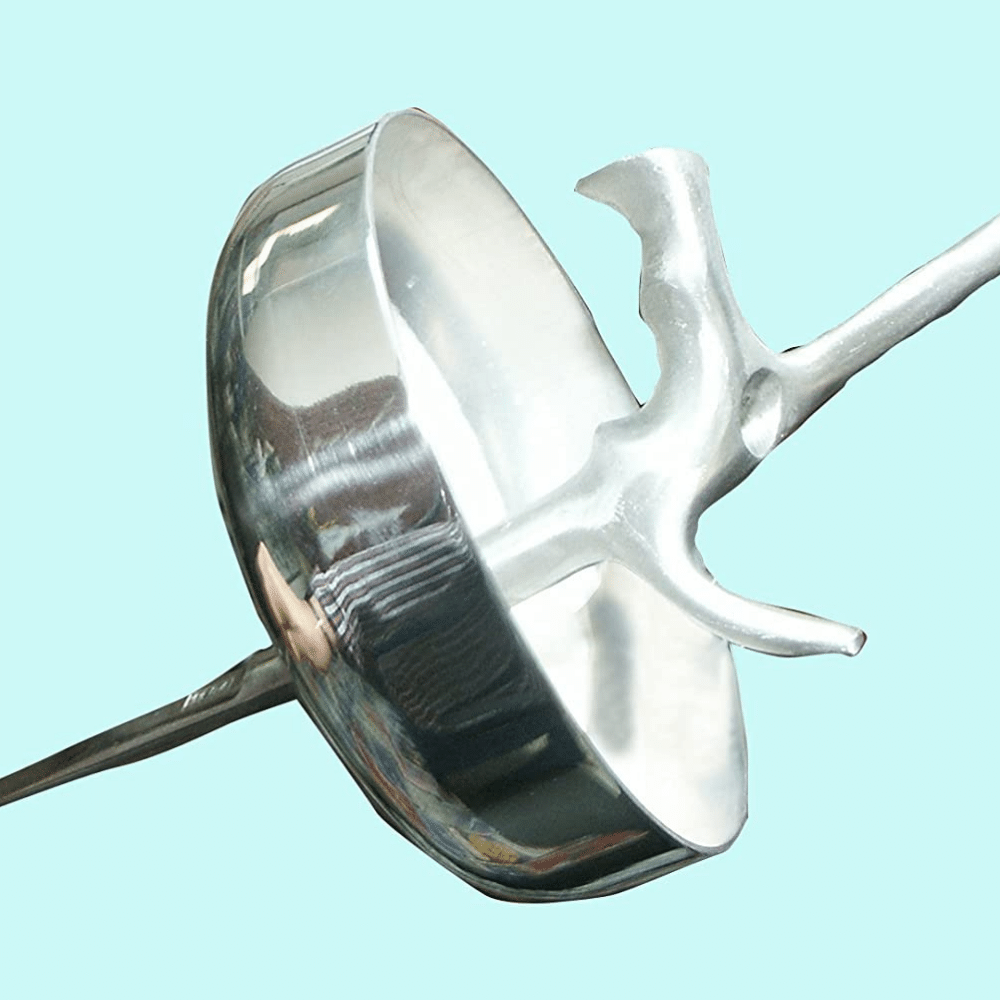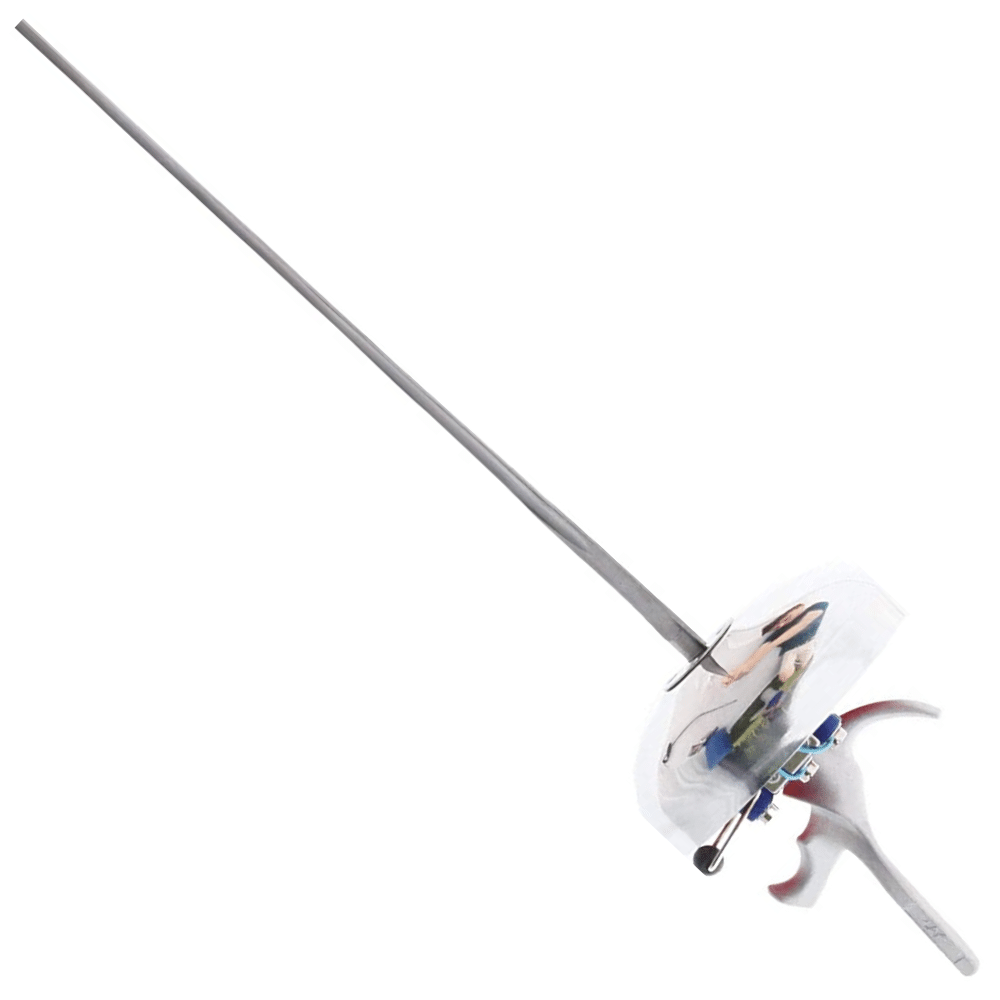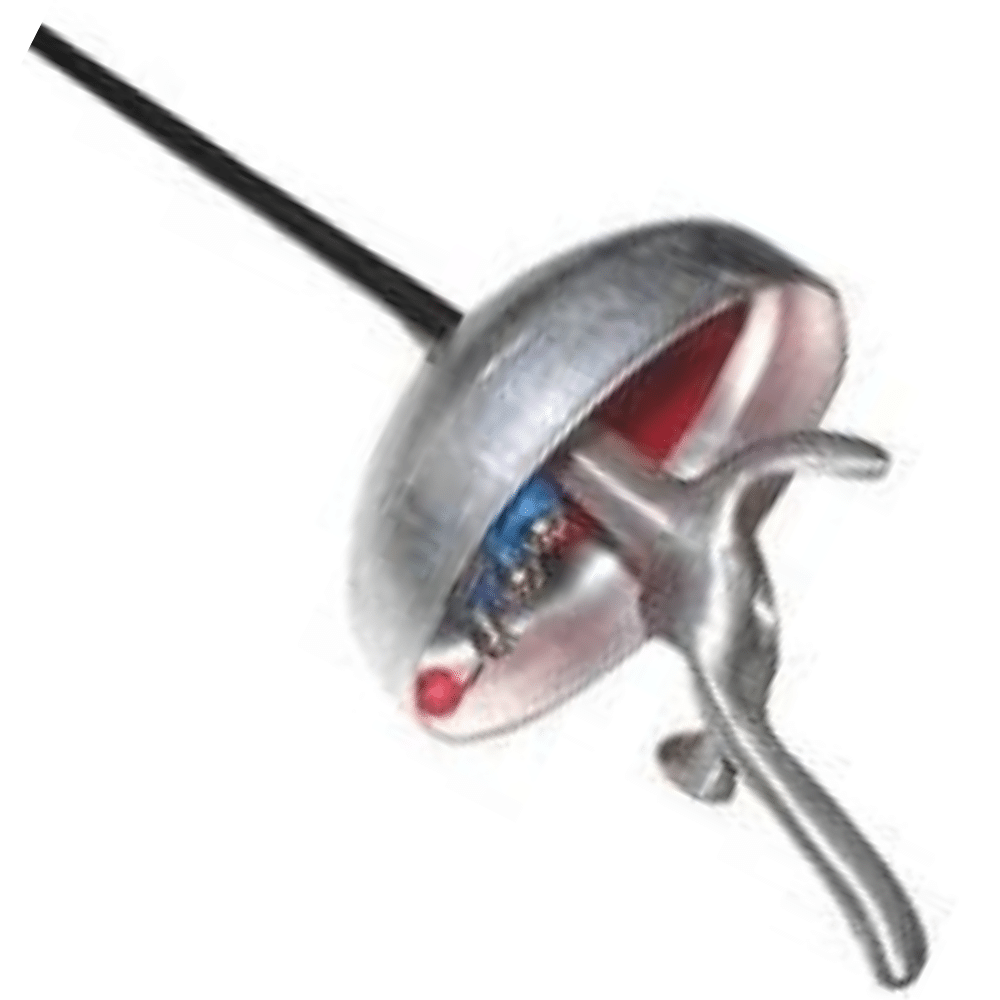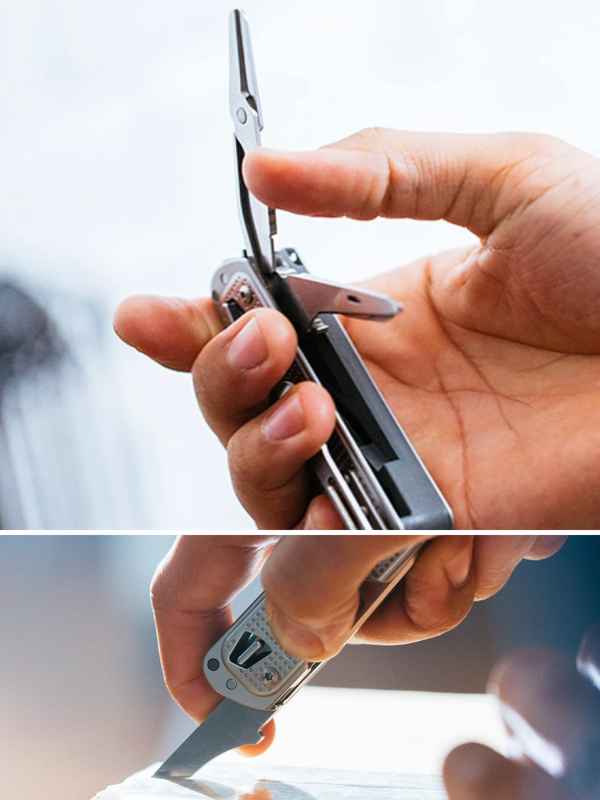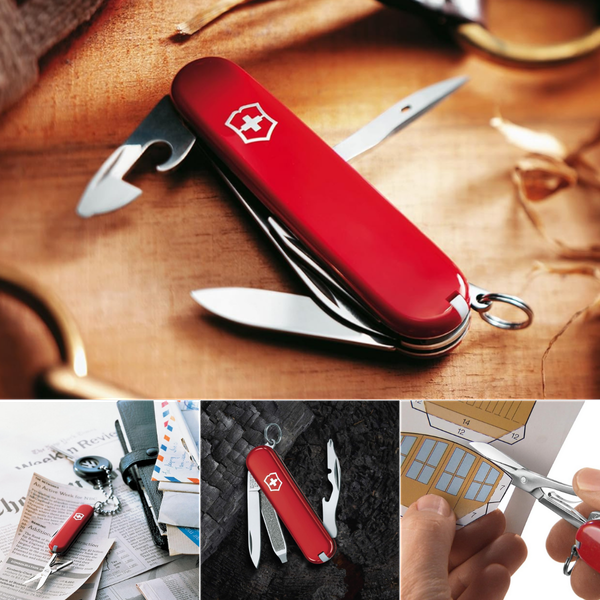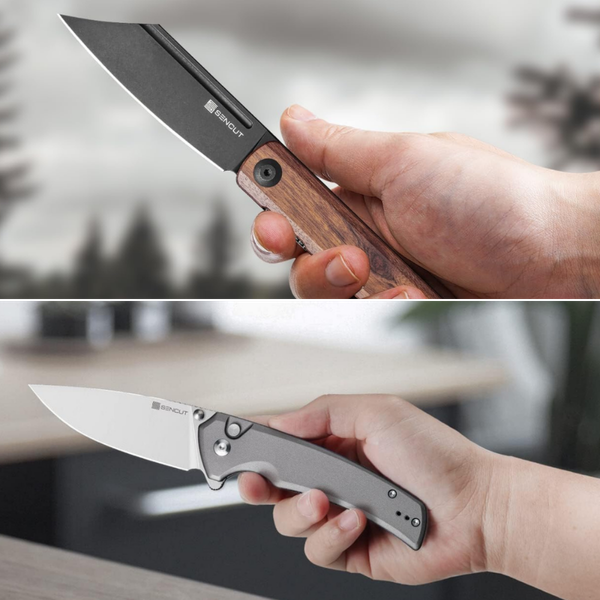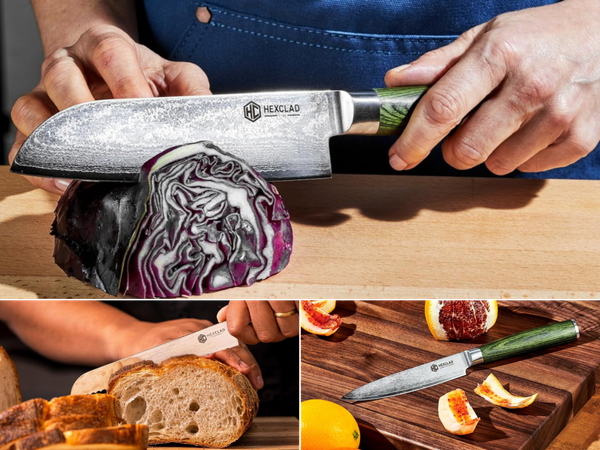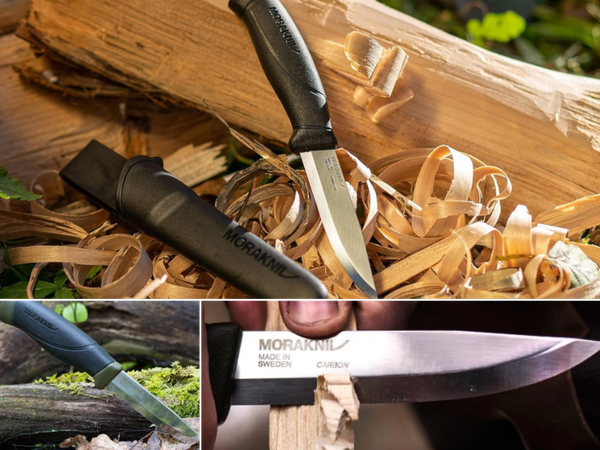Introduction to Fencing Disciplines
- Fencing is a sport with three main disciplines: foil fencing, épée fencing, and sabre fencing - each with its unique set of rules and target areas.
- The three weapons used in fencing are the epee, foil, and saber, each requiring distinct skills and strategies.
- Épée fencing, in particular, emphasizes the entire body as a valid target area, making it a challenging and strategic discipline.
- Fencers often compete in all three weapons but typically specialize in one, such as the epee or foil.
- The sport of fencing has a rich history, originating from military training and evolving into the modern fencing disciplines we know today.
History of the Epee Sword
- The epee sword has its roots in the dueling sword, with a stiffer, heavier blade and larger guard designed for protection.
- The modern version of the epee sword has undergone significant changes, with a focus on sport and competition rather than dueling.
- The epee sword has a long history, with its development influenced by various cultures and fencing styles, including the French and Italian schools.
- The epee sword is one of the three main weapons used in fencing, along with the foil and sabre, each with its unique characteristics and requirements.
- The evolution of the epee sword has been shaped by centuries of fencing history, with a focus on safety, sportsmanship, and technique.
Key Features of the Epee Sword
- The epee sword has a stiffer, triangular blade with a V-shaped fuller, making it a unique and challenging weapon to master.
- The epee sword features a larger bell guard designed to protect the arm and body during fencing, emphasizing safety and protection.
- The valid target area in epee fencing is the entire body, making it a fast-paced and strategic discipline.
- The epee sword is designed for simultaneous touches, with a focus on precision and control.
- The cross-section of the epee sword is typically triangular, providing a strong and durable blade for competition and practice.
Role of Epee Fencing
- Epee fencing is a highly strategic and physical discipline, requiring athletes to be in top condition and possess excellent technique.
- The role of epee fencing is to score points by hitting the opponent’s valid target area, using a combination of speed, agility, and strategy.
- Epee fencing is a mental and physical challenge, requiring fencers to think critically and react quickly to their opponents’ moves.
- The sport of epee fencing has been part of the Olympics since 1896, with a rich history and tradition of competition.
- Epee fencing is a discipline that emphasizes the importance of protective gear, including masks, gloves, and jackets, to ensure safety and prevent injury.
Comparison with Foil Fencing
- Foil fencing is another popular discipline, with a focus on the torso as the valid target area, unlike epee fencing, which targets the entire body.
- The foil sword is lighter and more flexible than the epee sword, with a focus on agility and quick movements.
- Foil fencing is a highly technical discipline, requiring fencers to possess excellent footwork and bladework skills.
- The rules of foil fencing are different from epee fencing, with a focus on right of way and priority.
- The equipment used in foil fencing is similar to epee fencing, with a focus on safety and protection, including masks, gloves, and jackets.
Techniques and Strategies
- Epee fencing techniques include a range of attacks, parries, and ripostes, designed to outmaneuver and outscore opponents.
- Strategies in epee fencing involve a combination of speed, agility, and tactics, including the use of feints, false attacks, and deception.
- Fencers must develop a strong sense of distance and timing to succeed in epee fencing, with a focus on controlling the pace and rhythm of the bout.
- The use of protective gear, including masks and gloves, is essential in epee fencing, allowing fencers to focus on technique and strategy without worrying about safety.
- Epee fencing requires a high level of physical fitness, including cardiovascular endurance, strength, and flexibility, making it a challenging and demanding discipline.
Equipment and Safety
- The equipment used in epee fencing includes the epee sword, mask, glove, and jacket, all designed to provide protection and safety.
- The epee sword is a highly specialized piece of equipment, with a focus on durability, balance, and performance.
- The mask and glove are essential pieces of safety equipment, protecting the fencer’s face and hand from injury.
- The jacket and pants are designed to provide protection and comfort, with a focus on flexibility and mobility.
- The use of wireless scoring machines and reels has improved the safety and efficiency of epee fencing, allowing for accurate and reliable scoring.
Training and Practice
- Training and practice are essential components of epee fencing, with a focus on developing technique, strategy, and physical fitness.
- Fencers typically practice several times a week, with a focus on drills, exercises, and sparring.
- The use of video analysis and coaching can help fencers improve their technique and strategy, with a focus on identifying areas for improvement.
- Fencers must also develop a strong sense of mental toughness and discipline, with a focus on managing stress and pressure.
- The development of a training plan and schedule is essential for fencers, with a focus on setting goals, tracking progress, and achieving success.
Competitions and Events
- Epee fencing competitions are held at the local, national, and international levels, with a focus on individual and team events.
- The Olympics and World Championships are the most prestigious events in epee fencing, with a focus on showcasing the best fencers from around the world.
- Fencers must qualify for competitions through a series of tournaments and events, with a focus on earning points and rankings.
- The use of electronic scoring machines and live streaming has improved the spectator experience, allowing fans to follow the action and results in real-time.
- The organization of competitions and events is typically managed by national and international governing bodies, with a focus on ensuring safety, fairness, and sportsmanship.
LEONARK Fencing Saber Foil Epee Electric Sword Weapon - National Grade with Guard Pad and Handle Grip - Professional Fencing Gear for Fencer
The most durable and responsive electronic sword on the market is now available in two different sizes. The perfect choice for beginners or pros alike, this lightweight device can be used every day at home as well as during practice sessions with adult fencers.
With its high-quality aluminum alloy bell guard pad paired perfectly against stainless steel blade guard rings that are both flexible yet sturdy enough to protect your weapon from unexpected corrosion, so you'll never have another problem when trying out new moves before matches start up again.
Practice Fencing Foil with French Handle
The lightweight, durable foils are perfect for practice and provide a good price point that's great if you're just starting out. They come in both left-handed (for use by your dominant hand) and right-handed models to suit either choice!
American Fencing Gear Fencing Epee Electric Sword Weapon National Grade with 1 Guard, 1 Guard Pad and German Fitting Tip and Barrel - Includes 1 Spare Blade - Size 5
The fencing epee is a light, durable weapon that can be used by both adults and children. The blade has encouraging flexibility for optimal performance in different types of combat situations while still being able to protect yourself from attacks with its guard protection system, which includes steel wire embedded into the handle so it will never break on you during practice or competition rounds.
Blade Practice Fencing Epee with French Handle
This fencing weapon is designed to be light and durable. It features a textured grip that prevents sweat from accumulating on your hands, making it great for practicing in hot weather conditions.
Complete Electric Fencing Epee with French Style Handle
This quality weapon is perfect for any fencing enthusiast. The electric epee blade has a stiff midsection that can withstand great stresses while maintaining its form, not going wayward like many other inferior blades do after being bent only slightly- this makes it an excellent choice in terms of durability as well! There's also some flexibility present at the wrist and forearm areas where, over time, slight legal bends will appear without destroying their functionality, which allows them to provide support when making touch commits with either hand.
Practice Epee with Pistol Grip
The pistol grip made the practice epee one of our more exciting weapons to come across. Its flexibility and light weight make it an excellent blade for any fencing enthusiast.
Morehouse USA Fencing - Kids Fencing Epee Sword
Tim Morehouse's children’s fencing epee is a great way to get started with the sport. It has an open design that allows easy passage of the blade, and its lightweight makes it ideal for kids who aren't quite ready or skilled enough yet!
Physical Chess Complete Electric Fencing Epee with Pistol Grip - Right Handed
The epee is an efficient weapon that can be used in any competition, as it has no screws to remove or break. The blade size of this electric fencing equipment fits adults up until they are 5 feet tall; therefore, you won't need a second sword for taller competitors who use #4 blades (34 inches)
The lightweight guard makes sure your hands don’t get tired during long battles while still protecting against strikes from other sabers, so if someone else doesn't have one, then there's no problem.
The aluminum grip has many benefits, from the thin wires leading to the body wires and strong glue, allowing everything to work correctly in exposed areas.
FAQs
What is an epee sword?
An epee is a fencing sword. It is a thrusting weapon with a triangular cross-section and a flat spine. The modern épée is the heaviest of the three disciplines of modern fencing, owing to its greater weight and longer reach. It has an electrical scoring apparatus on one side of the blade, which registers hits made by that side of the blade.
The best epee swords are typically made out of high-quality steel and have a strong grip. They also typically have a pointed tip, in contrast to other types of swords, such as sabers or foils, which are more rounded. Epee fencing swords are often used in competitive settings and can be either electric or non-electric.
Is an epee a rapier?
An epee is a rapier. It is a thrusting sword with a triangular cross-section and a sharp point. The epee is the heaviest of the electric épée and is used in épée fencing.
Is an epee a real sword?
Yes, an epee is a real sword. It is specifically designed for fencing and is the heaviest and stiffest of the three main types of fencing swords. The other two types are the foil and the sabre.
The epee evolved from the heavy dueling swords of the Renaissance period. It is still used in modern competitive fencing and is considered the classic fencing sword.
The best epee swords are made of high-carbon steel, which is hardened and tempered to create a durable, resilient weapon. Epee fencing swords typically have a blunted tip and a wide, flat central portion known as the "forte." This design gives the weapon its characteristic balance and heft.
What is the difference between an epee and a foil?
Fencing with an epee is very different from fencing with a foil. The main difference is the weight and thickness of the blade. An epee is heavier and has a thicker blade than a foil, which makes it better for stabbing and thrusting. The epee is also longer than the foil, which gives the fencer more reach.
Another difference between epees and foils is that electric scoring machines are used to score points with an epee, but not with a foil. This means that certain body parts can be hit with an epee (the entire body above the waist), but cannot be hit with a foil (only the torso), and must be used in a separate event.
What is the hardest weapon in fencing?
The hardest weapon to fence with is undoubtedly the epee. An epee is a sword that is heavier and stiffer than its foil and sabre counterparts, making it much more difficult to control. In addition, an epee point is blunted, so there is less margin for error when lunging or retreating - a mistake can easily result in getting hit. All of these factors make the epee the most challenging weapon to use in fencing, but also the most rewarding.
If you are looking for the best epee sword on the market, we highly recommend the Leon Paul Epee. This sword is handmade in France and features a superior balance and weight distribution that makes it easier to control than other swords.
Do fencing swords hurt?
The epee is a thrusting sword and does not have a cutting edge. So while it can deliver a sharp punch, it's not going to do the same damage as a slashing sword. That said, an epee can still break bones and puncture organs, and the force of the blow will depend on how strong you are wielding its V-shaped blade with sudden bursts.
The best epee swords are well-balanced and provide good control for the fencer. They should also be light enough so that you can make fast moves, but heavy enough so that you still feel the impact of your blows. Epee fencing swords come with either an electrical or non-electric option. The electrical sword is activated when it makes contact with your opponent's weapon.
What are the 3 types of swords?
The three types of swords are the long sword, the broad sword, and the saber. These three weapons were frequently used in every war for centuries.
The long sword is a double-edged weapon that is longer than the other two swords. It was primarily used for hacking and slashing.
The broad sword is a single-edged weapon that is wider than the long sword. It was primarily used for stabbing.
The saber is a single-edged weapon that is narrower than the broad sword. It was primarily used for slashing and is a sportive fencing weapon.
Is epee or foil harder?
There is no definitive answer to this question as it depends on personal preference. Some people find that the epee sword is more difficult to use because it is heavier and has a bigger blade, while others find that the foil sword is harder to use because it is lighter and has a smaller blade. Ultimately, it comes down to which of the two weapons you are more comfortable using.
Which fencing sword is best?
There is no definitive answer to this question as it depends on personal preference. Some people may prefer the feel of an epee sword, while others may prefer the heft of a sabre sword. Ultimately, it comes down to what the fencer feels most comfortable wielding.
That said, many people consider the epee sword to be the best all-around fencing sword. It is lightweight and has a sharp point, making it ideal for piercing an opponent's defenses. Additionally, the epee electric sword is a popular choice among competitors as it provides a more powerful shock when scoring a point.
Why do fencers bend their swords?
There are a few different schools of thought on why fencers bend their swords.
Some believe that it makes for a more aesthetically pleasing line when fencing, while others believe that it can help to increase the speed and power of your thrusts.
Still, others believe that it helps to keep your hand closer to the guard of your sword, making it more difficult for your opponent to disarm you.
Ultimately, though, it is up to each fencer to decide whether or not they want to bend their sword.
There are a few different types of epee swords available on the market, and each has its benefits and drawbacks.
Can you slash with epee?
Epee is a French word meaning "sword," and it is the name of a specific type of fencing sword. The epee is a thrusting weapon, and its triangular cross-section and heavy weight make it slower and less maneuverable than the other two fencing weapons, the foil and the sabre. However, its greater reach makes it advantageous in certain situations.
An epee can be used for either meter-class or practice swordsmanship, although some schools only use them for one or the other. Epees come in many different sizes, with dimensions typically ranging from 1 to 1.5 meters in length and 35 to 50 centimeters.
What is the heaviest fencing sword?
The heaviest fencing sword is the epee. It weighs about 770 grams or 1.7 pounds.
Who uses an epee?
The epee is a fencing sword that is used in the sport of fencing. Epee fencers use a sword that is similar to the one used in Olympic fencing but with a few differences. Epee blades are made of a different material from Olympic fencing blades, and they have different weights and dimensions. Epee fencers also use an electric Sword.
Epee swords are lightweight and balanced so that they can be easily wielded with one hand. The best epee swords are made of tempered steel and have a sharp point that can pierce through an opponent's armor. Epee fencers use a variety of techniques to parry and thrust at their opponents.
Epees were first used in France during the 17th century.
What is a fencer's sword called?
An epee is a fencing sword with a triangular cross-section blade and a guard that covers the hand. It is the heaviest and longest of the three modern fencing weapons used in sports, and its point is most effective for stabbing with its three-pronged point. Because of its length and weight, it gives the fencer more leverage for blows.


